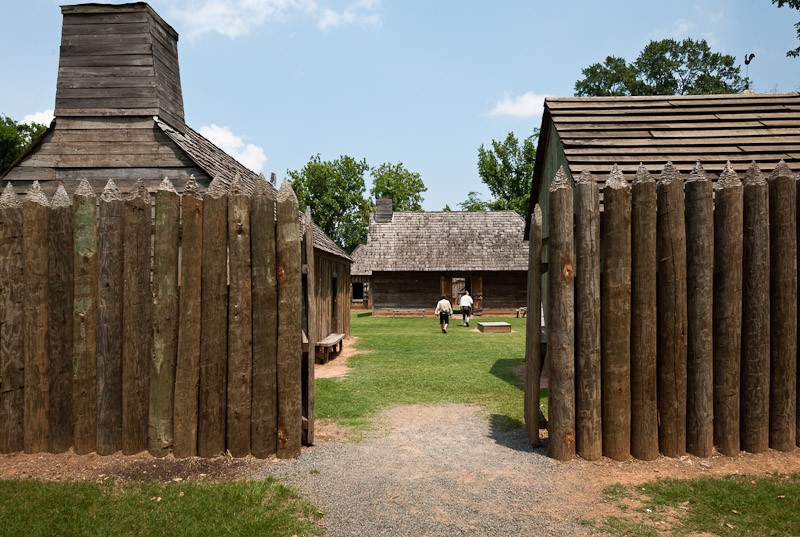Fort St. Jean Baptiste State Historic Site
Introduction
Text-to-speech Audio
Fort St. Jean Baptiste State Historic Site is a replica fort of a French military and trading outpost in Natchitoches, Louisiana. The original site of the fort is located a few hundred yards away. The original fort was built in 1716 by Sieur Charles Claude Dutisné, who was sent to Natchitoches with a French garrison to build a fort to prevent Spanish troops from marching from Texas into Louisiana. The fort eventually became a key trading center for the Native Americans, Spanish, and French in the Lower Mississippi Valley. Today, the fort is open to visitors from Wednesday until Sunday.
Images

Entrance to the fort

A view inside the fort

Backstory and Context
Text-to-speech Audio
The first permanent European settlement within Louisiana Purchase land, the area that later became the town of Natchitoches was founded in 1714 by Louis Antoine Juchereau de St. Denis, a French Canadian. Juchereau St. Denis later became commandant of Fort St. Jean Baptiste de Natchitoches. A replica of this fort sits on this site. The fort is in the Cane River National Heritage Area, which is known for its historical sites like Fort Jesup and its excellent examples of Creole architecture. The term Creole refers to colonial settlers of Louisiana, particularly those of Spanish and French heritage. French settlers began using the word Creole (meaning "of the colonies") to refer to people born in Louisiana rather than those living in Louisiana who were born in France.
Juchereau de St. Denis maintained a delicate, seemingly duel loyalty to Spain and France. He was responsible for the development of both New France (Louisiana) and Spanish Texas. Married to a Spanish woman, St. Denis declared his desire to become a subject of Spain. In January of 1743, he wrote a letter to Jean Frederic Phelypeaux, comte de Maurepas, at Versailles, resigning from his position as commandant of Natchitoches. He wished to retire to New Spain with his wife and children. However, because the Spanish believed him to be a secret agent of France, they forbade him from doing so. He died in Natchitoches on June 11, 1744.
Among his descendants is the founder of the Knights of the White Camellia, Alcibiades DeBlanc (1821-1883). The Knights of the White Camellia was an organization formed after the Civil War for the purpose of keeping former slaves from voting and ensuring white men maintained their political power. Another of St. Denis’ descendants, Jefferson J. DeBlanc (February 15, 1921-November 22, 2007) was a fighter pilot during the Second World War. A Marine Corps pilot, he earned the distinction of ace during WWII and later received the Medal of Honor.
Natchitoches was founded in 1714 by French-Canadian Louis Antoine Juchereau de St. Denis while he was traveling on a trade mission to Mexico from Mobile, Alabama. He and his men built a small village and Denis left a small detachment there to guard it and to establish trading ties with the local Native Americans. The village was the first European settlement in the territory that would become part of the Louisiana Purchase in 1803.
The fort was held by the French until 1762, when England defeated France in the French and Indian War. France was then forced to cede the Louisiana colony to Spain. Spain occupied the fort but eventually abandoned it , and it was in ruins by the time of the Louisiana purchase. The replica fort was constructed in 1979.
Sources
"Fort St. Jean Baptiste State Historic Site," http://www.crt.state.la.us/louisiana-state-parks/historic-sites/fort-st-jean-baptiste-state-historic-site/index. Retrieved 6-3-15.
